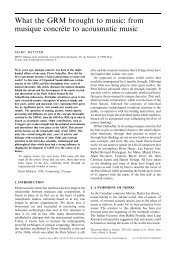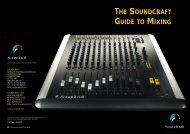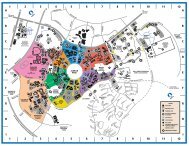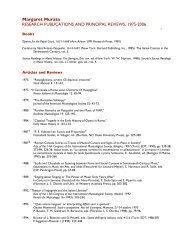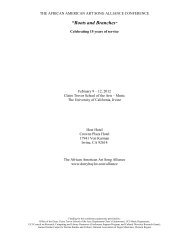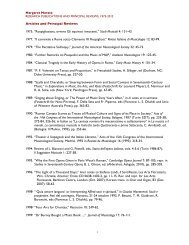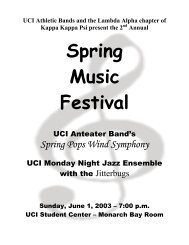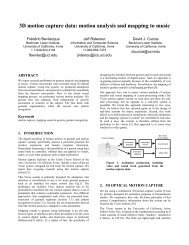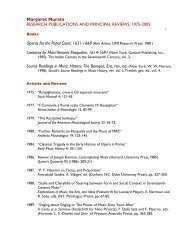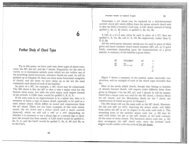Symphony June book.indd - Music - University of California, Irvine
Symphony June book.indd - Music - University of California, Irvine
Symphony June book.indd - Music - University of California, Irvine
You also want an ePaper? Increase the reach of your titles
YUMPU automatically turns print PDFs into web optimized ePapers that Google loves.
<strong>Symphony</strong> No. 1 in G minor<br />
Vasily Kalinnikov’s name is not readily recognized by the average concert goer, but his<br />
importance in the annals <strong>of</strong> pre-revolutionary Russian music is undeniable. Kalinnikov<br />
did not live a very long life, having been stricken by a very rare disease which took the<br />
composer’s life before the age <strong>of</strong> 35.<br />
After graduating from the Moscow Philharmonic <strong>Music</strong> School in 1895, Kalinnikov<br />
produced his first <strong>Symphony</strong>, in G minor, a work the composer hoped would bring him<br />
some recognition. After a disappointing review by Rimsky-Korsakov, the work was finally<br />
premiered at a concert <strong>of</strong> the Russian <strong>Music</strong> Society in 1987, with Alexander Vinogradsky as<br />
conductor. This performance was a success, with the second and third movements encored.<br />
The first movement <strong>of</strong> the symphony is the longest and <strong>of</strong>fers two lyric themes<br />
somewhat indicative <strong>of</strong> Russian song life. The second movement opens with harp and<br />
violins setting a gentle, rocking pizzicato foundation for a poetic English Horn solo. After the<br />
Scherzo and Trio <strong>of</strong> the third movement, a movement possessing its own charm, the work<br />
proceeds to the Finalé where the composer re-introduces and further explores thematic<br />
material from the earlier movements. The climax <strong>of</strong> the work is presented through the<br />
trombones’ enthusiastic representation <strong>of</strong> the formerly serene English Horn tune <strong>of</strong> the<br />
second movement, bringing the work to a joyful end.<br />
The symphony is scored for: 2 flutes, 2 oboes (1 doubling on English horn), 2<br />
clarinets, 2 bassoons, 4 horns, 2 trumpets, 3 trombones, 1 tuba, harp, timpani, triangle, and<br />
strings, and is approximately 40 minutes long.<br />
— Dr. Stephen Tucker



